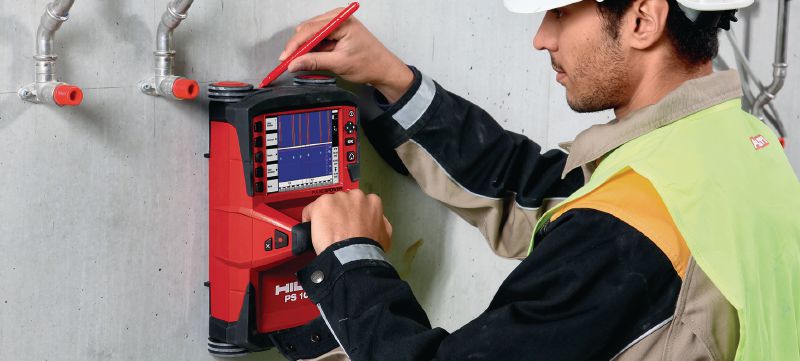RainierGPR Service Areas: Leading Concrete Scanning Solutions Across Regions
RainierGPR Service Areas: Leading Concrete Scanning Solutions Across Regions
Blog Article
Concrete Scanning: A Critical Step Towards Making Certain Structural Honesty and Security
In the world of building and facilities maintenance, the value of concrete scanning can not be overstated. By using advanced innovation and approaches, concrete scanning serves as a critical device in making sure that the stability and safety of bridges and structures are maintained to the highest criteria.
Relevance of Concrete Scanning
Concrete scanning plays a crucial role in making certain the architectural honesty and safety and security of buildings and framework tasks. By making use of advanced modern technologies such as ground-penetrating radar (GPR) and electro-magnetic induction, specialists can non-destructively check concrete structures to find possible defects, gaps, ingrained things, and support layout. This process enables very early detection of abnormalities that could endanger the stability of a framework, protecting against expensive problems and ensuring the safety and security of residents.
Concrete scanning is especially important throughout the preparation and construction stages of a job. Before boring, cutting, or coring right into concrete, scanning helps recognize the accurate places of rebar, post-tension cable televisions, and various other ingrained elements, reducing the danger of unintentional hits that might bring about architectural weaknesses. Additionally, concrete scanning help in quality assurance by validating the density of concrete covers and discovering any kind of discrepancies that may influence the overall longevity of the structure. Inevitably, spending in concrete scanning services is not only a positive procedure to alleviate risks however also an essential step in the direction of maintaining the long-lasting safety and stability of buildings and facilities.
Innovation for Concrete Evaluation

Benefits of Very Early Detection
Timely detection of structural problems can dramatically minimize threats and guarantee the durability of building jobs. By identifying potential problems at an early stage in the building and construction procedure, stakeholders can take proactive steps to resolve problems prior to they escalate into larger and more pricey troubles. Among the vital advantages of very early detection is the prevention of architectural failings, which can position major safety and security hazards and bring about task delays and economic losses.
In addition, early discovery enables timely repairs and upkeep, which can help extend the life-span of the structure. By resolving problems immediately, building teams can avoid pricey repair services or perhaps the need for premature replacement of structural parts. This aggressive method not only saves time and money but additionally enhances the total safety and security and toughness of the building task.
Additionally, very early detection can boost job planning and decision-making by providing stakeholders with valuable understandings right into the problem of the structure. Equipped with this info, task supervisors can make informed options concerning building and construction techniques, timelines, and products, bring about a lot more successful and efficient project end results.
Making Sure Structural Security
Ensuring the structural stability of a construction project is paramount to its security and longevity. Architectural stability refers to the capacity of a building or framework to maintain its form and feature under various lots and ecological conditions. To attain this, thorough analysis and tracking of the framework are necessary. Concrete scanning plays an essential duty in guaranteeing architectural stability by finding prospective problems such as gaps, delamination, or reinforcement corrosion that might endanger the honesty of the structure with time.
By using sophisticated scanning innovations like ground-penetrating radar (GPR) and electromagnetic induction, construction professionals can non-invasively evaluate concrete structures to determine locations of concern underneath the surface area. This proactive method enables the very early discovery of weak points or flaws, enabling punctual fixings or reinforcement to stop architectural failures.
Regular concrete scanning during different building phases and throughout the life process of a structure can aid keep its security, mitigate risks, and make go to my site sure the safety of residents. By prioritizing architectural security with concrete scanning, construction projects can improve their resilience and durability, inevitably adding to better safety and long life.

Preventing Crucial Failures
Applying routine examinations, such as concrete scanning, can reveal covert flaws like voids, fractures, or deterioration that might jeopardize the integrity of a framework. By using innovative scanning innovations like Ground Passing through Radar (GPR) or Concrete X-ray, designers can non-destructively examine the problem of concrete and recognize weak factors that need support or repair work.

Verdict
Finally, concrete scanning plays an important role in ensuring structural stability and safety and security by using sophisticated modern technology for very early detection of prospective issues. This aggressive strategy aids avoid essential failings and guarantees the stability of frameworks. It is necessary to prioritize concrete assessment as a basic method to secure the longevity and safety and security of buildings and framework.
Concrete scanning plays an essential function in guaranteeing the architectural integrity and safety and security of buildings and framework tasks. Additionally, concrete scanning aids in high quality control by validating the density of concrete covers and discovering any type of inconsistencies that might impact the total durability of the structure. Concrete scanning plays a critical function in making sure structural stability by finding possible issues such as gaps, delamination, or support corrosion that could read more endanger the integrity of the framework over time.

In conclusion, concrete scanning plays a crucial function in ensuring structural stability and security by using innovative modern technology for early detection of potential problems.
Report this page